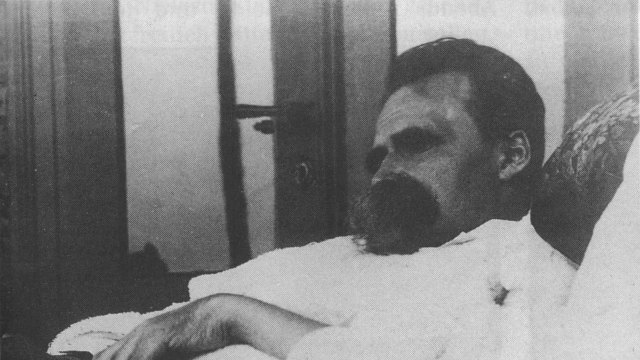The Second Annual Valentine’s Day Rant

Is it my cranky imagination or does Valentine’s Day become more of a big deal every year? All of the second-tier holidays seem to have gotten elevated in the last decade: St. Patrick’s Day, President’s Day, Columbus Day, and so on. This may be due to a sagging consumer economy that runs on holiday-based spending; namely, of course, Christmas, but Halloween works just as well.
I’m a 40-something married woman but my attitude toward Valentine’s Day basically matches that of your typical, 4th grade boy: it makes me want to vomit.
Pre-Valentine’s, I’m reminded that although I occasionally enjoy listening to some local sports talk shows, I’m not their intended demographic. Every ad is about pleasing your “lady” and avoiding being in the “doghouse” by buying her something suitably expensive and/or cute. Occasionally cute and expensive are combined, as in a recent promotion for a teddy bear that could be wearing a diamond necklace.
Suddenly, grown women are expected to coo over teddy bears. Suddenly, every inadequately wealthy or insufficiently romantic man who doesn’t buy enough for his lady is Andy Capp, and his lady the bathrobed harridan who awaits him angrily at the door with a rolling pin in hand.
Valentine’s Day is among the tackiest and most tasteless of holidays. So is New Year’s Eve, which is also a heavily couple-focused holiday, feted largely with overpriced, mediocre prix-fixe meals, cheap dresses with halfhearted pretensions to class, and open bars with rail drinks.
Valentine’s Day trades in the most insipid clichés of middlebrow romance. If you took the promotions seriously, it’s all about hothouse roses, lobster dinners, cheap champagne, teddy bears, domestic chocolates, and tacky, poorly-made lingerie.
About this day, I’m a proud, unrepentant snob. The minute Build a Bear factors into my love life in any way, I’m packing it in. I had a friend growing up who was so indelibly marked by the Valentine’s mise en scene of true love that every time she tried to share a romantic or erotic fantasy with us, it ended up being all about lobster tails getting dipped in butter. There was never any sex, or, really, any man involved.
Valentine’s is a diabolically cynical example of how there is nothing that can’t be turned into a commodity, that can’t be appropriated for profit. Your feelings, passion, and heart are there for the taking. All the histories document how Big Floral and Big Chocolate appropriated the holiday to capture their market share of love from the card companies in the early 1900s. Your heart, for a day, is a wholly-owned subsidiary of Whitman’s Sampler, and you will do its contrived bidding, or get called an insensitive lout.
As marketed, the day is emotionally proprietary and a celebration of smug exclusivity. It’s about who “the one” is. And, it’s romantically comparative by the lowest metric imaginable—who gets the best gift or, in more recent coinage, whose man does the “sweetest, nicest thing” for his girl. It trusses up ideas of romance, relationships and sexuality that we might otherwise have outgrown by now—to wit, males buy things for females, and by buying these things prove that they love them, and then they don’t buy their ladies nice things it’s because they don’t love them enough, and you, as a female, should pout about that juvenilely when it happens, until your male buys you something worthy to restore your warm feelings.
Now that I think about it, the elementary Valentine’s Day of my youth was much more philosophically appealing. The 4th grade Valentine’s Day was scrupulously democratic, even socialist. The teacher made clear that you had to share the love. You had to bring valentines for everyone in the class, and woebetide if your parent or teacher discovered otherwise, that you were conspiring to hurt someone’s feelings.
In its own way, those hastily-decorated brown bags by which we collected all of our valentines conveyed the loftier idea of universal, unselfish love, or agape. Everyone got a valentine, everyone was worthy, the default was to share the love. Of course, we were being “forced” to include everyone, and there was always that one kid—and I probably was that one kid for other kids—that we dreaded giving a valentine to.
But of all the social compulsions imaginable, surely the least offensive is that we extend an affectionate courtesy even to those we don’t care for; that we act loving, even when we don’t feel loving.
Interestingly, in its earliest days in America, Valentine’s Day implied a similarly encompassing social obligation, that you sent valentines to colleagues, relatives, friends as well as romantic interests.
The meaning of the day changed, such that there is now only one Valentine. I’m Yours… Be Mine… Those cards that you punched out the night before school and carelessly-distributed to everyone in your class are for just one person now. By adulthood, we have outgrown the tender illusion of that grade school valentines bag, that love and affection in this world would be equally and generously dispersed.
Those who are suffering heartache, unrequited love, a defunct, “I See Dead People” marriage, or are at the moment unhappily single, can feel rotten about themselves, if they took Valentine’s Day seriously–which I sincerely hope they do not.





